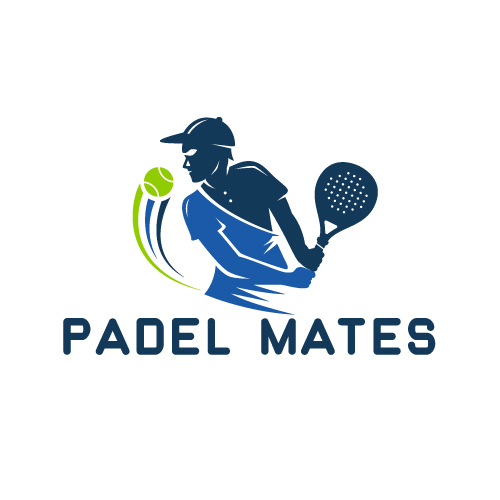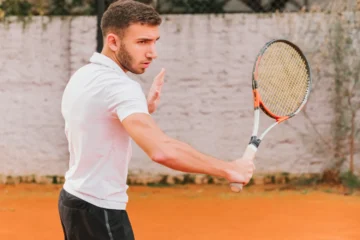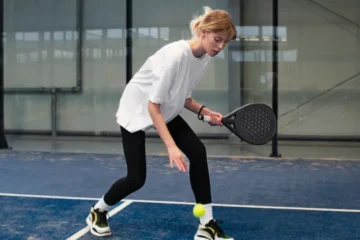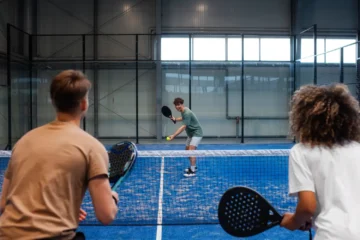In recent years, padel has grown from a niche pastime to one of the fastest-growing racket sports globally. Combining elements of tennis and squash, padel is fun, social, and relatively easy to pick up, which makes it particularly appealing to new players of all ages.
However, like any sport, starting with the right equipment can make all the difference in both your enjoyment and your progress. Choosing your first padel racket is an essential step that can shape your technique, reduce the risk of injury, and maximize your potential on the court. With so many brands and models on the market, the selection process can feel overwhelming, but don’t worry—this guide is designed to simplify that journey for you.
In this article, we’ll break down the basics of padel rackets, discuss key factors to consider, suggest some beginner-friendly rackets, highlight common mistakes to avoid, and offer guidance on where and how to buy your first racket.
1. Understanding Padel Racket Basics
Before you choose your first racket, it’s helpful to understand the key features that distinguish one from another. Padel rackets are designed with various shapes, weights, balances, and materials, all of which affect your game.
Shape
Padel rackets come in three main shapes:
- Round: Known for their large sweet spot and enhanced control, round rackets are perfect for beginners. They offer forgiveness on off-center hits, making it easier for newcomers to build confidence.
- Teardrop: A hybrid shape offering a balance between power and control. These are ideal for players who’ve moved beyond the basics but aren’t yet advanced.
- Diamond: Designed for power, these rackets have a higher sweet spot and are best suited to experienced players who already have precise control and technique.
Weight
The weight of a padel racket can greatly affect how it feels in your hand and how you play:
- Light (350-370g): Easier to handle and maneuver, especially beneficial for beginners who are still learning to swing with consistency.
- Medium (370-385g): Offers a blend of power and control.
- Heavy (385g+): Provides more power but can strain the wrist and arm if your technique isn’t solid.
Balance
Balance refers to how the racket’s weight is distributed:
- Head-light: Easier to maneuver, ideal for defensive players and beginners.
- Even balance: Offers a balanced feel between power and control.
- Head-heavy: Generates more power, but requires good technique and physical strength.
Core Material
The core of the racket is usually made from EVA foam, available in soft or hard variants:
- Soft EVA: Absorbs vibrations, offering more comfort and control.
- Hard EVA: Provides more power and a solid feel but transfers more vibrations to the hand.
Surface Material
The outer surface can affect the racket’s performance:
- Fiberglass: More affordable and flexible, which makes it ideal for beginners.
- Carbon Fiber: Offers more durability and precision but can be less forgiving for beginners.
- Hybrid: Combines the advantages of both materials, often used in mid to high-end rackets.
2. Factors to Consider When Choosing Your First Racket
A. Skill Level
Your experience level plays a major role in determining the type of racket you should choose. Beginners typically need a racket that offers control and forgiveness, rather than one focused on power.
- Beginners: Look for rackets with a round shape, soft core, and head-light balance.
- Intermediate/Advanced Players: Can experiment with teardrop or diamond shapes, harder cores, and different balance points based on their play style.
B. Racket Shape and Control
For beginners, control is key. A racket that helps you make consistent contact with the ball builds confidence and reduces frustration.
- Round Shape: Offers a large sweet spot and easy handling. Best suited for players just starting.
- Teardrop Shape: Provides a mix of power and control for those transitioning from beginner to intermediate.
- Diamond Shape: Prioritizes power but demands advanced skill for accurate play.
C. Weight and Maneuverability
A lighter racket helps reduce fatigue and strain, especially as you get used to the game.
- Lightweight (350-370g): Easier on the wrist and shoulder, allowing you to focus on technique.
- Heavyweight (370g+): Offers more power but can be challenging to control for beginners.
D. Balance and Swing
The balance of a racket determines how easy it is to maneuver:
- Head-light: Offers faster reaction time and better control—perfect for new players.
- Head-heavy: Delivers more power, but harder to control if your strokes aren’t consistent.
- Even balance: A good middle ground but still might be slightly less forgiving for beginners compared to head-light models.
E. Core and Surface Materials
Soft materials tend to offer better control and absorb shock, which is useful for new players who are still perfecting their grip and swing.
- Soft EVA Core: Prioritizes comfort and control, reducing the impact on your arm.
- Hard EVA Core: Offers more power and direct feedback, better for experienced players.
- Fiberglass Surface: Cost-effective and beginner-friendly, with a forgiving, softer feel.
- Carbon Surface: Durable and responsive but less forgiving on off-center hits.
3. Top Padel Racket Recommendations for Beginners
Here are a few beginner-friendly rackets to consider, balancing performance and budget.
1. Head EVO Sanyo
- Pros: Lightweight, large sweet spot, comfortable soft foam.
- Cons: Limited power for more aggressive players.
- Ideal For: Absolute beginners who want control and forgiveness.
2. Babolat Reflex
- Pros: Hybrid shape for both power and control, affordable price.
- Cons: May feel slightly rigid for some beginners.
- Ideal For: Players who expect to advance quickly but still need a beginner-friendly design.
3. Adidas Drive 3.2
- Pros: Round shape, lightweight, fiberglass surface.
- Cons: Not suitable for advanced power play.
- Ideal For: New players who prioritize maneuverability and control.
4. Nox X-One Evo
- Pros: Comfortable to handle, balanced design, versatile.
- Cons: Limited durability at higher competitive levels.
- Ideal For: Beginners who want a racket they can also use as they grow.
5. Wilson Pro Staff Team
- Pros: Round shape, soft EVA core, easy to maneuver.
- Cons: Less powerful compared to advanced rackets.
- Ideal For: Players who value precision and comfort over brute force.
4. Common Mistakes to Avoid
Many beginners make the error of choosing a racket based on appearance, brand hype, or advice from more advanced players whose equipment needs are entirely different. Here are some pitfalls to sidestep:
- Choosing a racket that’s too heavy or unbalanced: This can lead to injuries and hinder your learning curve.
- Picking an advanced racket too soon: Advanced rackets often prioritize power over control, making them unforgiving for beginners.
- Ignoring grip size and comfort: A poorly sized grip can cause discomfort and even wrist strain. Make sure your racket’s handle fits comfortably in your hand.
5. Where to Buy and How to Test a Racket
Best Places to Purchase
- In-store: Sporting goods stores allow you to feel the weight, test the grip, and sometimes even try out rackets on demo courts.
- Online: Websites like Amazon, Padel Nuestro, and manufacturer-specific stores often offer better prices, wider selections, and customer reviews.
Importance of Demoing Rackets
If possible, always demo a racket before buying. Many clubs and shops offer rental or demo programs. Testing allows you to feel how a racket complements your swing, strength, and comfort.
Check Return Policies and Warranties
When buying online, ensure the retailer has a fair return or exchange policy. Some manufacturers offer warranties covering defects in materials and workmanship, which can be especially useful for new players still learning how to handle their equipment properly.
Conclusion
Choosing your first padel racket is more than just picking the coolest-looking model—it’s about selecting a racket that supports your learning curve, helps you build confidence, and keeps the game fun and injury-free.
Remember these key points:
- Start with a round-shaped, lightweight, head-light racket.
- Prioritize control and comfort over power.
- Focus on reputable beginner models like the Head EVO Sanyo, Adidas Drive, or Wilson Pro Staff Team.
- Avoid the temptation to jump straight to advanced rackets.
- Test before you buy if possible, and ensure your chosen racket feels good in your hand.
With the right racket in hand, you’ll find that your skills improve faster and your enjoyment of the game will skyrocket. Once you’ve built a solid foundation, you can always upgrade to a racket that matches your growing confidence and abilities.
So hit the court, have fun, and let your new racket guide you on your padel journey!
FAQs: Choosing Your First Padel Racket
1. What shape of padel racket is best for beginners?
For beginners, a round-shaped racket is the best option. It offers a larger sweet spot, which makes it easier to hit the ball consistently, and provides better control, helping you build confidence.
2. How heavy should my first padel racket be?
Beginners should opt for a lightweight racket (350-370g) to reduce strain on the wrist and arm. Lighter rackets are easier to handle and maneuver, helping you develop a smooth, consistent swing.
3. Should I choose a head-light or head-heavy racket?
For beginners, a head-light racket is ideal. It offers better maneuverability, faster reactions, and better control, which is crucial when you’re learning the game.
4. What material is best for a beginner’s racket?
A fiberglass surface and soft EVA core are great for beginners. These materials provide a forgiving feel, reduce vibrations, and offer more control, making them ideal for new players.
5. Can I use an advanced padel racket as a beginner?
It’s best to avoid advanced rackets as a beginner. These rackets are often designed for power and require precise control, which may hinder your learning process and increase the risk of injury.
6. How do I know if a racket fits my grip size?
To ensure comfort and prevent strain, choose a racket with a grip size that feels snug but not tight in your hand. The grip should allow your fingers to wrap comfortably around the handle without forcing them to overlap or leaving too much space.
7. Where should I buy my first padel racket?
You can purchase your racket from sporting goods stores, which allow you to try the racket before buying, or from online retailers like Amazon or Padel Nuestro, where you can compare prices and read customer reviews.
8. Should I demo a racket before buying it?
Yes, always try to demo a racket before purchasing, if possible. Many clubs and shops offer rental or demo programs, allowing you to test the racket’s feel and performance on the court before making a commitment.
9. How can I avoid making mistakes when choosing a racket?
Avoid the common mistakes of selecting a racket based on appearance, choosing one that’s too heavy, or picking an advanced model too soon. Focus on comfort, control, and suitability for your skill level instead.
10. How do I take care of my padel racket?
To extend the lifespan of your racket, store it properly (avoid extreme temperatures), clean it regularly with a soft cloth, and protect it with a cover when not in use. Avoid hitting the ground or any hard surfaces to prevent damage.




